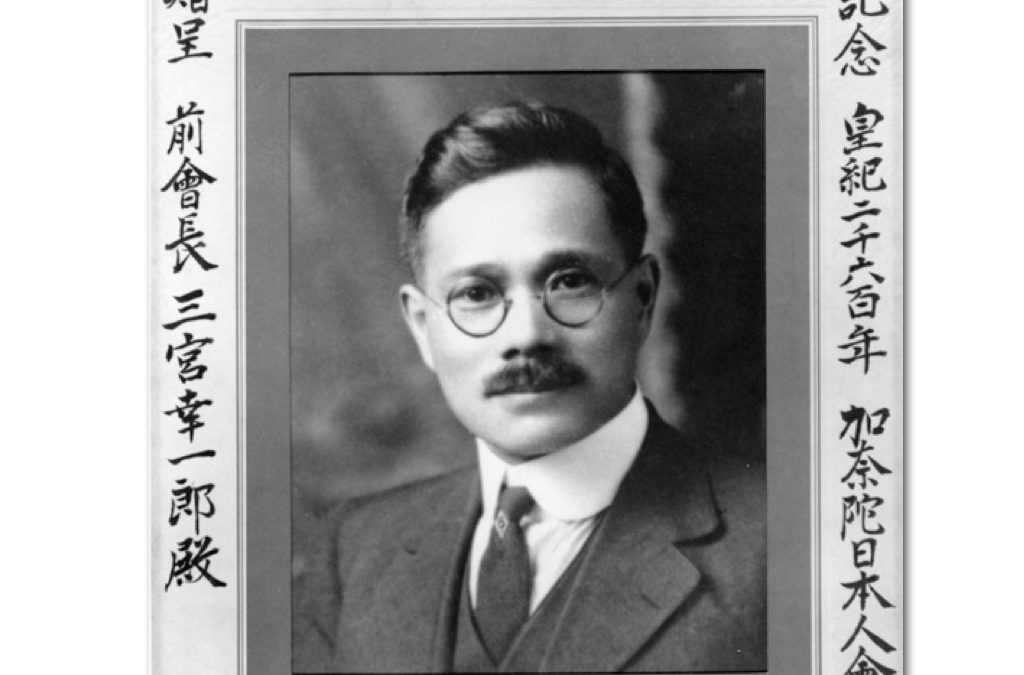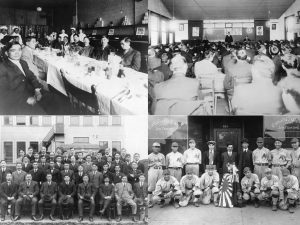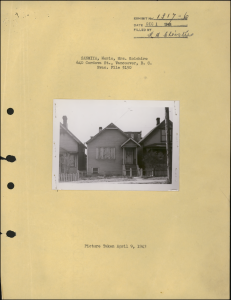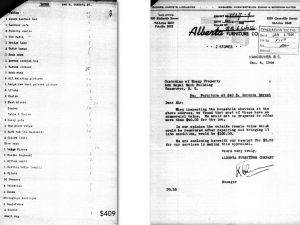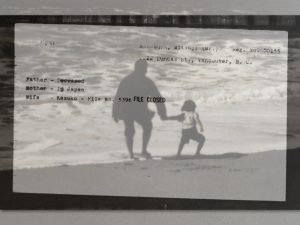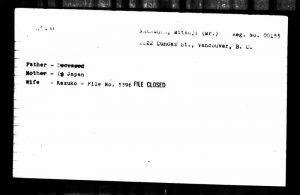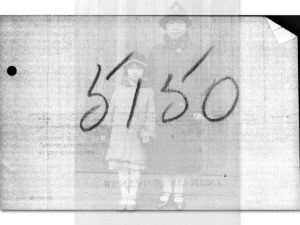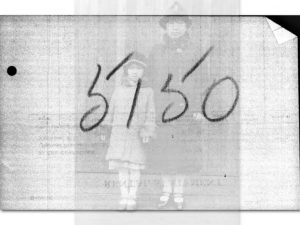Submitted by Kate Michi Ettinger
I came to this resource a bit sideways. Shortly after redress in the early 90s, my Mum started a family history project focused on her grandfather, Koichiro Sanmiya, a business leader in the early Canadian Japanese community in Vancouver. We knew a lot about Koichiro from my grandmother’s memories and photographs– he served on the board of the Alexander Language School, he had a restaurant, he ran an import-export business, he owned a newspaper that sponsored the Asahi Baseball team, he sold war and victory bonds that helped fund the Stanley Park Memorial for WWI vets and he was a president of the Canadian Japanese Association.
He had the first and only Malt & Sake license in British Columbia in the 20s throughout prohibition era. Koichiro died suddenly from appendicitis in 1931. Whereupon his wife, Morio, sold the sake business and acquired a wholesale dressmaking business from Mrs. Oka, a seamstress friend. As with everyone, details from the Vancouver chapter of our family history were lost in the war. Last year, I began to help my Mum with her grandfather’s biography. I looked for corroboration for dates and locations of businesses by searching old newspaper articles and troves of Vancouver archive material.
I found a property at 640 E. Cordova listed under M Sanmiya. Initially, I thought it was Morio, but then I wondered whether it was Marmuro, who was nisei- the 1st Canadian born son of the Sanmiya family. I set out to find property records; Lisa Uyeda from the Nikkei Museum suggested that we contact Mike and the Landscapes of Injustice project. Mike provided documents that explained the family’s properties, including this picture of 640 E Cordova, which Morio bought in 1936; she did extensive renovations including a large building behind the house for the dressmaking factory. She hoped to get $6000 for its sale; initially, it was appraised for $5000. In the end, it was sold for net: $3000.
The files revealed letters that unabashedly undervalued the property to secure a steal price, multiple appraisals each taking fees that drained the assets, taxes despite being dispossessed, and the custodian’s 5% commission on a sale. Here you see an inventory that Morio had made of the household belongings– listed with a total value of $409. On the right, a furniture appraiser offered to take it all for $40. On whole reading the correspondence, my stomach knotted with disgust, sadness, and rage at this plunder.
As for what was confirmed and learned about the internment itself, it’s a bit different.
When I was in 8th grade, I interviewed my grandfather, Mits Nakamura, about his experience for a primary source history project. I sat attentively with a lined notebook, and pencil. I asked questions intently with journalistic dispassion born from my complete ignorance about the horrors that I was asking him to recount. He told me how non-Japanese came around to buy everything they were forced to sell for pennies before the evacuation, how the family had to leave their home and stay in a horse stall, and that he was relieved that my grandmother and her mother left quickly to join her brother, Marm, a medical student in Edmonton outside of the evacuation zone. But my grandfather was kibei– Canadian born, but returned to Japan at age 3 where he remained until he was 19. He had only returned to Canada 5 years earlier. He was Japan-educated and his English was poor. His papers took longer to clear, and he was sent to a farm where he spent his days running alongside a truck– picking up rocks, gasping in the dust it kicked up, which was bothered his asthma. Covered in dust, it was “worse than you would treat a dog” he said with tears in eye- the first time that I saw my grandfather cry. When I asked, “and then what happened?” He abruptly left the room and apologized to my Mum that he couldn’t help further with this assignment. I am the only witness to his story– a conversation that seared his pain on my heart. I remember the interview vividly– it haunts me.
From the Landscapes of Injustice project, I learned that my grandmother went to Lucky Strike, Alberta before reaching Edmonton and that my grandfather was at Hepburn Farm in St. Thomas, Ontario. Family separation. My mum and her sisters had thought the family was in Lethbridge together, and had no knowledge that their father had been interned in Ontario. Now, I wonder whether the family settled in London, Ontario in order to be closer to where my grandfather was interned. We received answers that prompt new questions. Sadly, this generation is gone. So these will remain question marks forever.
I will close by sharing how it felt to read through these documents.
Despair. Most chilling were the index cards. Each person is reduced to a number on an index card that meticulously cross-referenced family members’ numbers right down to a four-month-old child. Dehumanizingly reduced from Morio to 5150- cataloguing people, like library books. Despair at the inhumanity.
Disgust. My kibei grandfather described his experience “being treated worse than a dog” at Hepburn Farm, Ont. Disgust at the indignity.
Outrage. Lives upended and stripped bare. Treasures devalued by forced evacuation, then plundered by opportunists. Efforts to redress wrongs laced with persisting discrimination. Rage at the injustices.
Invisible injuries pierced spirits; scars silently passed to descendants. Shedding light on hidden histories begins healing. We discovered that Morio, remembered as a fun, kind, great cook, and loving grand/mother, was also a savvy, skilful entrepreneur. As we bear witness to injustices endured, we can also honour her more fully. We gratefully embrace her tremendous legacy of strength, courage, resilience, and grace.
Kate Michi Ettinger is a yonsei hafu; she participated in one of Landscapes of Injustice Sharing Family Stories events in conjunction with the National Association of Japanese Canadians (NAJC)

